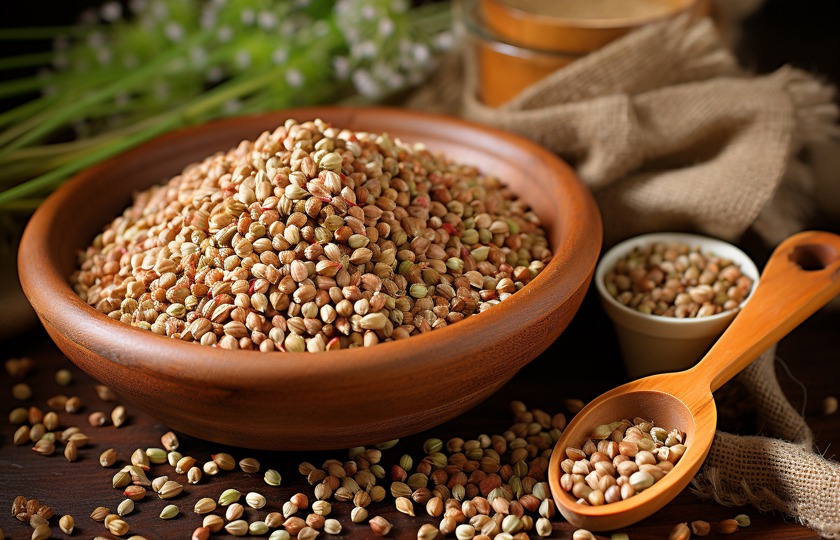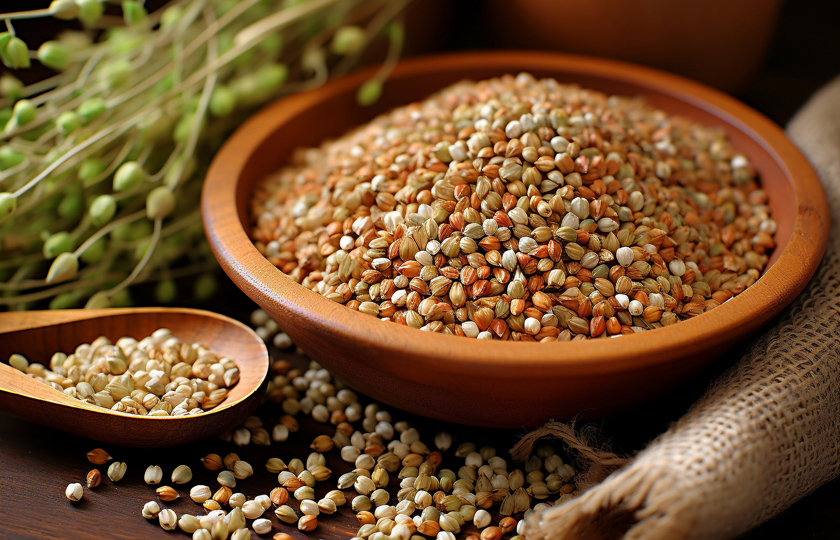Can Wheat Berries Be Cooked in Soups?Here's What the Experts Say

The exploration of food is an endless journey, with every ingredient holding surprises. Today, let's discuss an intriguing topic: wheat berries. Can this common yet unique ingredient be used to make soup? Let's uncover the answer together!
The answer
First, let’s get to know wheat berries. Wheat berries refer to whole wheat grains that retain the bran, germ, and endosperm, making them highly nutritious. This ingredient has a wide range of culinary applications; not only can it be used to make bread and pastries, but it can also be cooked into soups.
As for the question of whether wheat berries can be used to make soup, the answer is yes! Cooking wheat berries in soup not only adds a unique texture but also enriches the dish with nutrition and flavor. During the cooking process, wheat berries absorb the flavors of the other ingredients in the broth while releasing their own nutty aroma, resulting in a hearty and delicious soup.
Here’s how to prepare it:
Prepare the ingredients: Choose high-quality wheat berries and soak them for several hours to soften.
Prepare the broth: Select chicken, beef, or vegetables as the base for your soup and bring sufficient water to a boil.
Add the wheat berries: Once the broth is boiling, add the soaked wheat berries and continue cooking.
Season and serve: Add salt, pepper, and any other seasonings to taste, and cook until the wheat berries are tender.
It’s important to note that wheat berries have a relatively long cooking time, so be patient as they absorb the broth and become tender. Additionally, you can enhance the soup by adding other ingredients, such as vegetables and meats, to further enrich the flavor and nutritional value.
Should You Soak Wheat Berries Before Cooking?
Yes, soaking wheat berries before cooking is highly recommended. Here are a few benefits of soaking:
Shortens Cooking Time
Reason: Wheat berries have a tough outer shell, and cooking them directly takes a long time to soften.
Effect: Soaking allows the berries to absorb water and swell, which can reduce the cooking time to about 30 minutes to 1 hour.
Improves Texture
Reason: During soaking, wheat berries become softer, and their internal structure loosens.
Effect: This results in a creamier texture, making the cooked wheat berries more tender and less chewy.
Enhances Nutrient Absorption
Reason: Soaking helps break down phytic acid in the wheat berries, releasing more minerals.
Effect: This increases the bioavailability of minerals, allowing the body to better absorb nutrients like calcium and magnesium.
How to Soak:
Time: It’s generally recommended to soak for 6 to 12 hours, preferably in the refrigerator to prevent bacterial growth.
Water: Use cold water, ensuring there’s enough to completely cover the wheat berries.
Notes:
If you're short on time, you can opt for a quick boiling method (cooking the wheat berries in boiling water). However, soaking remains the best choice overall.
How Much Do Wheat Berries Expand When Cooked?
Generally, wheat berries absorb water and expand during cooking, but the degree of expansion is influenced by several factors:

Factors Affecting Expansion:
Wheat Variety: Different varieties of wheat berries may have varying water absorption and expansion properties.
Grain Size: Smaller wheat berries tend to absorb water and expand more easily.
Cooking Conditions: The cooking time, water temperature, and amount of water used all affect the level of expansion:
Typical Expansion: Under normal cooking conditions, wheat berries may expand to about 1.5 to 2 times their original volume. However, this is just a rough estimate, and the exact outcome can vary based on how they are prepared.
In summary, while wheat berries do expand when cooked, the degree of expansion is not particularly large. You can adjust the cooking time and water amount according to your personal texture preferences.
Can Wheat Berries Be Used to Make Porridge?
Yes, wheat berries can be used to make porridge and are rich in dietary fiber, protein, B vitamins, and various minerals. When cooking porridge, it's recommended to soak the wheat berries for several hours beforehand to help them soften during cooking.
You can combine wheat berries with rice, millet, or other grains, such as in a wheat berry oatmeal porridge. Simply place them in a pot, add enough water, and bring to a boil over high heat. Then, reduce the heat to low and simmer gently. Be sure to stir occasionally to prevent sticking.
The resulting porridge has a rich texture, with the chewiness of the wheat berries blending beautifully with the aroma of the grains. It’s a nutritious and healthy choice!
What Is the Flavor of Cooked Wheat Berries Like?
Cooked wheat berries have a unique flavor, exuding a nutty aroma with a subtle sweetness. They offer a chewy texture, with a slightly tough outer skin and a soft, elastic interior.
Overall, wheat berries have a fresh taste that absorbs the flavors of broth or seasonings well, adding depth to various dishes. When paired with other ingredients, they not only enhance the texture but also boost the nutritional value of the meal.
What Can You Make with Wheat Berries?
Wheat berries are a versatile ingredient suitable for various cooking methods and dishes. Here are some common uses:
1. Staple Foods
Wheat Porridge: Rinse the wheat berries and cook them with enough water to create a creamy porridge. This dish is smooth, nutrient-rich, and easy to digest, making it suitable for all ages.
Wheat Rice: Wheat berries can partially or completely replace rice. Mix them with the appropriate amount of water and cook in a rice cooker for a uniquely textured wheat rice that is high in dietary fiber, promoting gut health and improving digestion.
2. Main Dishes
Stir-Fried Wheat Berries: After cooking or steaming the wheat berries, stir-fry them with various vegetables and proteins. For example, combine them with bell peppers, scallions, and eggs to create a colorful and flavorful dish.
Wheat Berry Salad: Mix cooked wheat berries with a variety of vegetables, fruits, and nuts, adding dressings like olive oil, lemon juice, and salt for a refreshing salad. This dish is nutritious and perfect as an appetizer or light meal.
3. Soups
Wheat Berry Soup: Cook wheat berries with herbs and other ingredients to make a hearty soup. For instance, simmer them with licorice and jujubes to create a nourishing sweet soup that calms the heart and mind.
Vegetable Wheat Soup: Combine wheat berries with vegetables such as carrots, potatoes, and tomatoes for a delicious and nutrient-packed soup. This option is excellent for everyday meals and as a nutritious choice for recovery during illness.
4. Other Applications
Pasta Making: While wheat berries are not used directly to make pasta, they can be ground into flour for various pasta dishes such as noodles, bread, and buns. These pasta products not only have unique textures but are also nutrient-rich.
Baking Ingredient: Flour made from wheat berries can be used for baking cakes, cookies, and other desserts. These treats are not only delicious but also provide some nutritional benefits.























